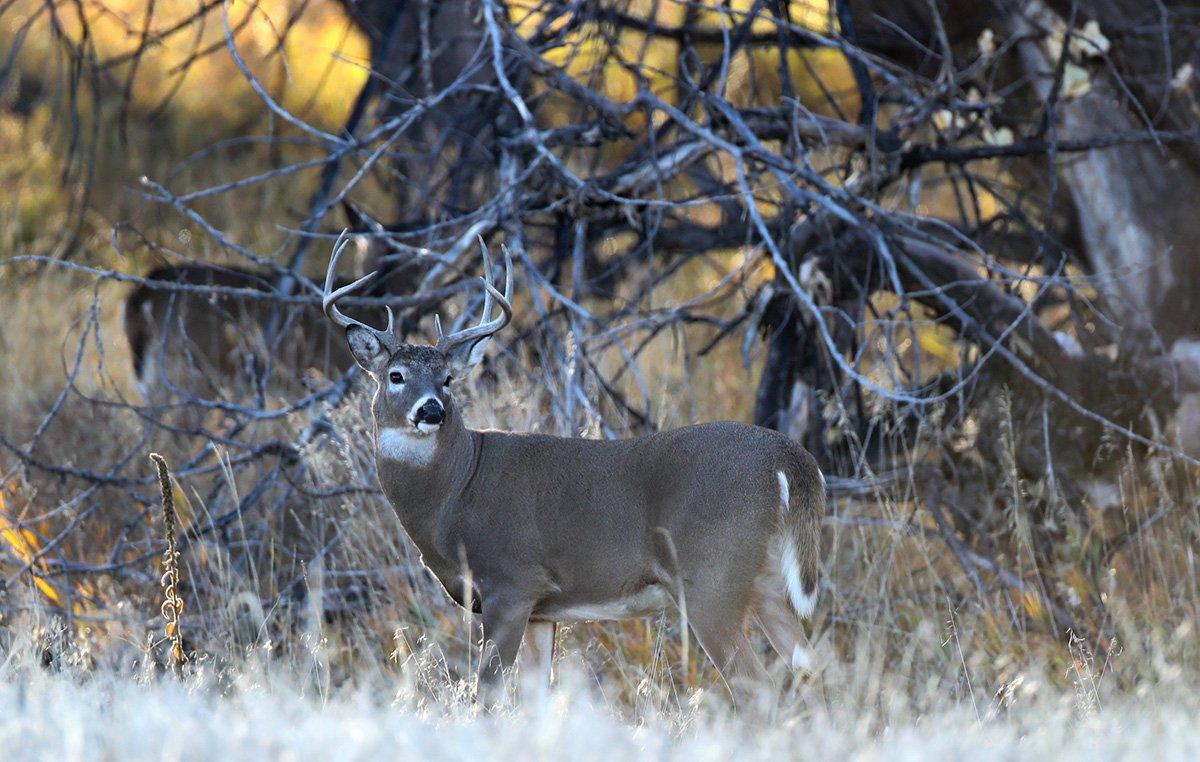Anecdotal data, personal observation, and research from Penn State all suggest bucks move more when the breeze is blowing
You hear it all the time at hunting camps, bow shops, and anywhere else deer hunters congregate: Deer don't move on windy days. And there's no questioning Granddaddy when he recites that bit of wisdom for the fiftieth time. You're safer lining a pack with medium-rare deer steaks and walking through Kodiak country than to correct him.
I prefer to count on evidence rather than conventional wisdom. For starters, I keep a hunting journal that contains detailed information on deer sightings and weather conditions. A few years ago, I flipped through it and realized that windy days seemed to correspond with pretty good deer hunts. I've even killed some good bucks on blustery days.

Listen to the Experts
Even if that realization was helpful, my records are still anecdotal and unscientific. I started digging for existing data on wind's effect on deer movement, and Penn State University didn't disappoint. The school is a recognized leader in whitetail behavioral research.
PSU confirmed that most hunters subscribe to the same wisdom: Of the 1,600 surveyed, approximately 90% believed deer always move less on windy days. But are they right?
To test this, PSU undergrads performed a study in 2013. They measured the number of miles that radio-collared deer traveled during October, analyzing some 1,700 whitetail days and nights.
They concluded that both bucks and does move more during windy days than calm ones, and less on windy nights than calm nights. During daylight hours, does traveled nearly a third farther when winds measured 1 to 3 mph than when winds were under 1 mph. The distance traveled remained relatively the same until winds reached 10-plus mph, when their distance finally peaked at 0.4 miles. (Ten miles per hour might not seem like much wind, but I checked into it, and it's well above average in October, where I hunt.) Like does, daytime buck movement gradually increased with wind speeds, traveling the farthest once winds surpassed 10 mph (more on that below). Mind you, all of this happened during the infamous (and completely bogus) October lull.
That's just one study, though, and winds didn't exceed 12 mph during the 31-day test window. It was probably just a fluke that deer moved more on windy days, right?
But PSU replicated this study in 2015 and 2016. Researchers analyzed three categories of wind speed: calm (less than 1 mph), moderate (1 to 15 mph) and strong (16 to 27 mph). Measurements were taken during the day, night and crepuscular (dawn and dusk) periods.
Similar to the 2013 study, wind had a less pronounced impact on does, and daytime distance traveled still increased as wind speeds picked up. Wind appeared to have a much larger impact on bucks. Under calm wind conditions during the day, bucks moved approximately 30 meters per hour. That increased to about 35 meters under moderate winds, and skyrocketed to an average of 65 meters once winds exceeded 16 miles per hour.
Not only did bucks increase their movement on windy days, but it only takes a light air movement to cause them to increase their activity, says Jessica Hepner, a former PSU undergrad who helped conduct the research. Bucks seem to like stronger winds and move more no matter how strong the breeze … while females don't really care either way. Keep in mind that these results are only observational. We cannot control the weather. But it appears that wind has a greater effect on the activity of males than females at higher wind speeds.
Applying the Research
While these studies demonstrate that deer actually move more on windy days than calm ones, they don't determine why. Do increased winds improve scenting conditions? Winds are often associated with fronts, so could cold fronts be spurring the movement? Does the chilling effect of wind encourage deer to stay warm by moving around? Or does wind make it more difficult for deer to be detected by predators?
I don't have to have the answers to these questions to know that I love to hunt windy days. And the research backs me up: Bucks travel double and triple their normal distances under high winds.
Windy conditions also make it more difficult for deer to spot a hunter in a tree or on the ground. Moving branches and vegetation help conceal your movements, and can even provide the perfect conditions for a stalk.
Besides, other hunters are likely to stay home on such days because, as the research clearly shows, people expect poor hunting under such conditions. They're not going to miss the big game for a (perceived) low-odds hunt.
So, if you take anything away from this article, remember to give windy days a chance. Telling Granddaddy the good news is up to you. My advice? Just let your trophy room speak for itself. Perhaps you could just ask your taxidermist to inscribe the wind speed on the metal name plate.











































